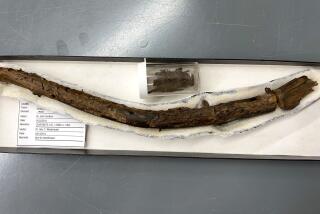Hot Plants : In the Summertime When Temperatures Soar, the Living Is Easy for Succulents
- Share via
ARCHITECTURALLY,a broad terrace by the front door balances the mass of a house. Horticulturally, however, it presents a problem: What can be grown? Landscape architect Robert Fletcher’s solution for this San Marino house was a harmonious yet intriguing collection of plants in pots. The terrace not only was a broad expanse that needed filling, but it also faced due south. “On those days when the temperature is around 100 degrees,” Fletcher says, “it must be 120 on this terrace.”
He used handsome clay pots in a variety of shapes and sizes, each a slightly different shade of terra cotta. Succulents were the logical choice for a heat-resistant planting. But not all succulents like heat or sun; many are actually native to foggy, but dry, coastal areas, such as the Canary Islands or the coast of Mexico. Two aeoniums, the blue-gray-leaved Aeonium haworthii and the green A. arboreum , were started from “headlings,” as Fletcher calls them--the tops of old clumps, cut from the stems and rerooted in mass--that were growing on the property.
Trusty jade plant, both the common green-leaved kind and the gray-leaved Crassula arborescens , occupy other pots. But Fletcher also needed plants with dark, glossy green foliage to pick up the texture and color of nearby magnolias. Natal plum--in this case the dwarf variety ‘Tuttle’--and a kumquat are both heat-resistant and provide a good, solid background for the more distinctive succulents. Fletcher also used Wilson holly, one of the toughest hollies, but found that it can burn on our hottest days. Fletcher would substitute a new dwarf magnolia named ‘Little Gem,’ which is just that--a tight, compact evergreen magnolia that throws out a flower or two a month and has an applique of russet velvet on the undersides of the leaves.
After enduring two summers in Southern California, all on this San Marino terrace is alive and well.






